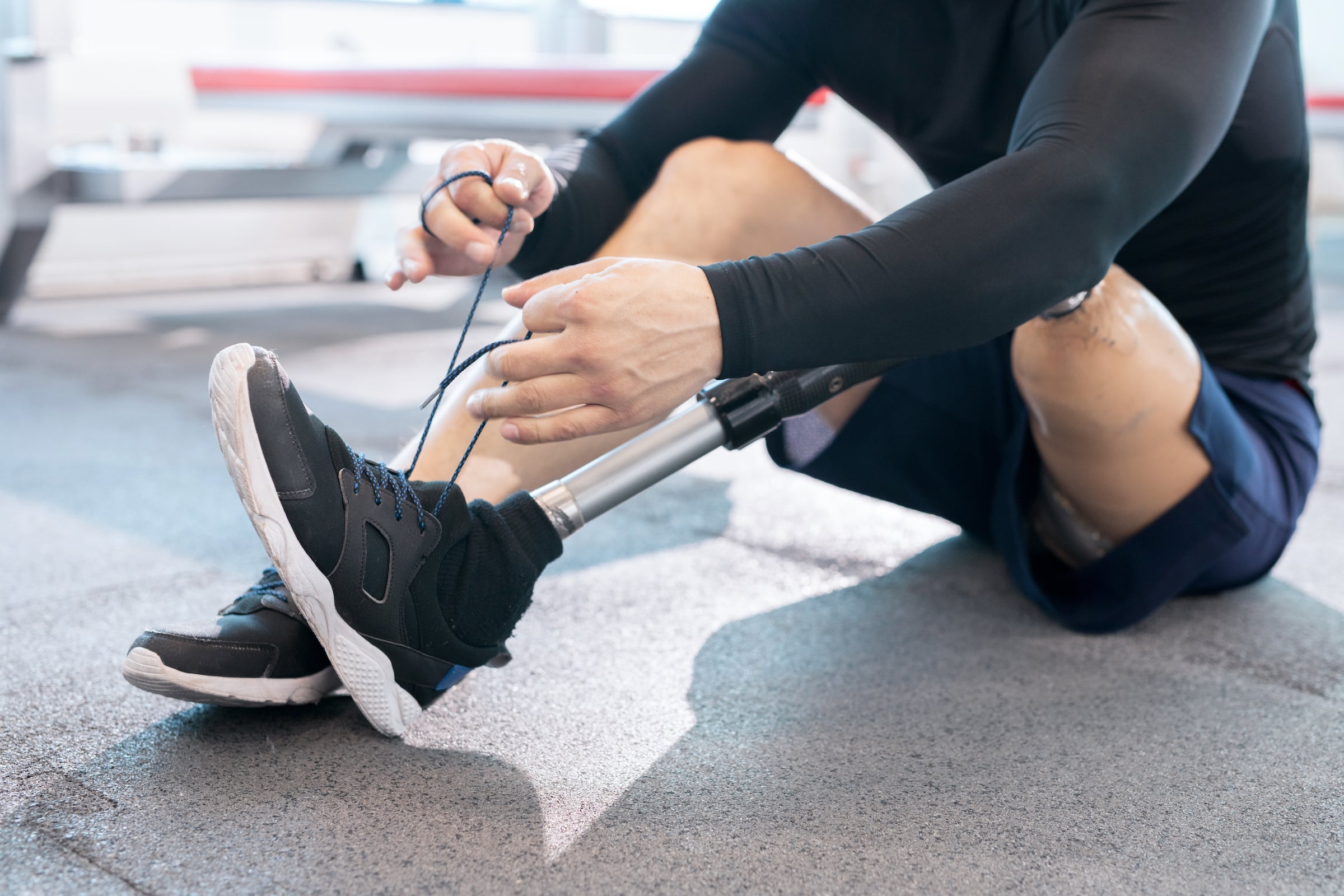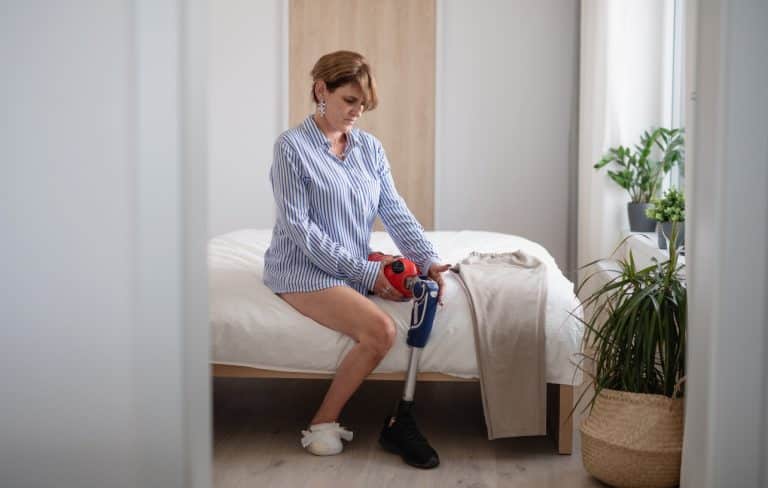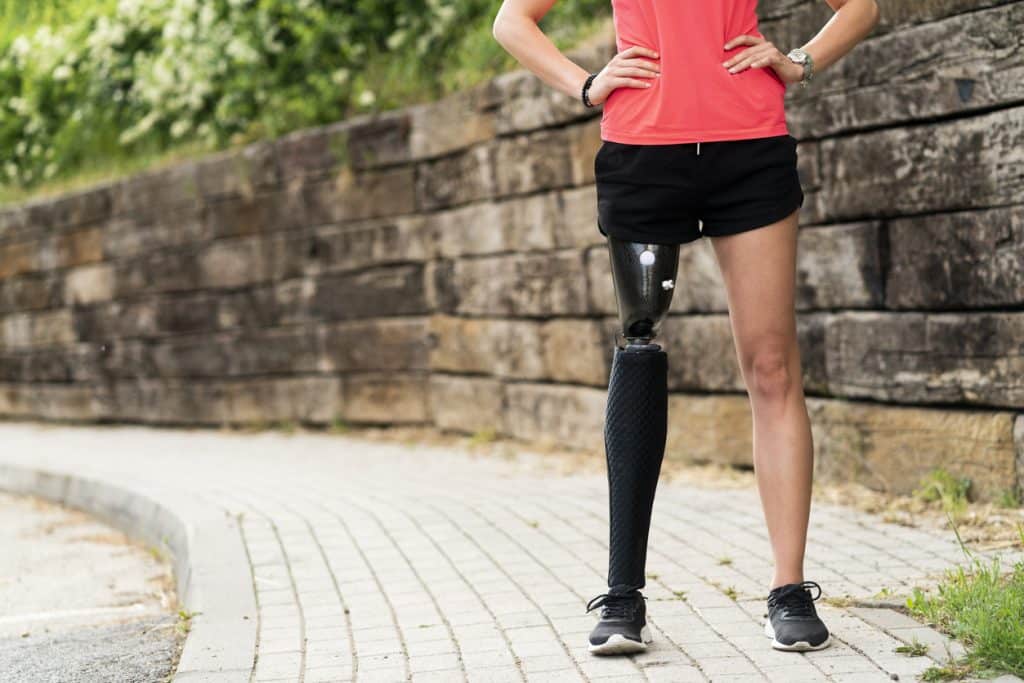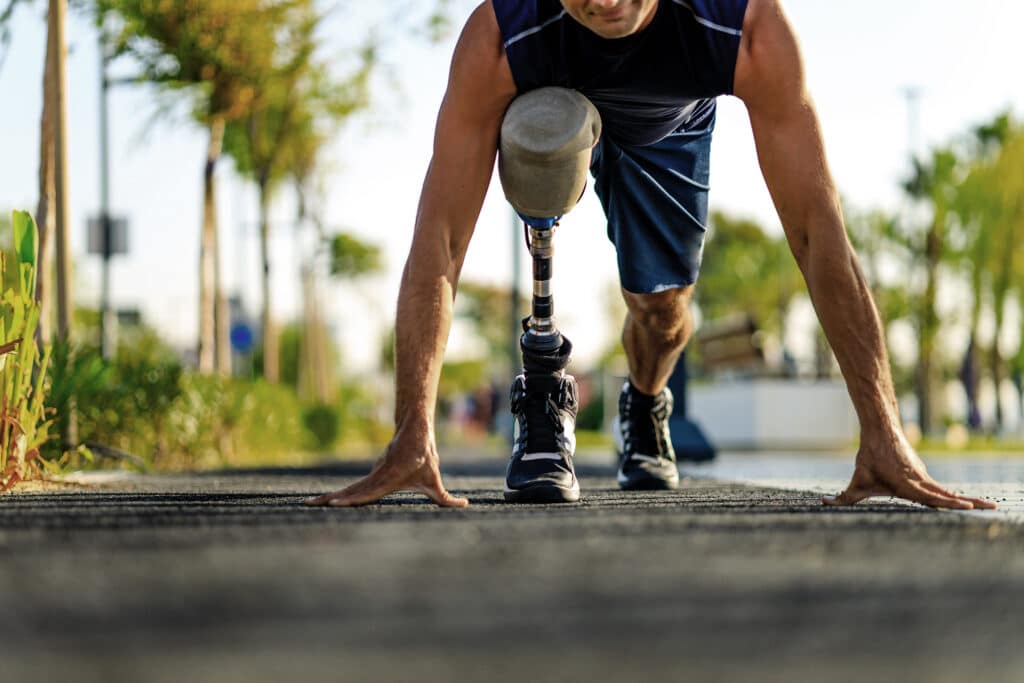Above The Knee Limb Loss

Above The Knee Prosthetics in Gross Pointe, MI
At Above and Beyond Orthopedics we know the loss of a limb can be life changing. Our above knee prostheses can help keep you mobile and get you back on track. We are a women-owned practice with skilled and experienced prosthetic and orthotic practitioners bringing services to the people of Metro-Detroit and beyond.
The goal of Above and Beyond Orthopedics is not only to restore mobility and quality of life, but to help you reach your full potential and maximize your abilities. Schedule your free evaluation today with one of our skilled and experienced orthotic or prosthetic practitioners to help you get you back on your feet again.
What Are Above The Knee Prostheses?
Above-the-knee (AK) prosthetics, also known as transfemoral prosthetics, are prosthetic devices that are worn by individuals who have had a amputation above the knee. These prosthetics are designed to replace the function of the missing limb and allow the individual to walk, run, and engage in other activities.

Components Of Above The Knee Prosthetics
The main components of an AK prosthetic include the socket, which is the part of the prosthetic that connects to the remaining part of the limb, the knee joint, which allows for flexion and extension of the knee, and the foot and ankle, which provide support and stability. There are several different types of knee joints available for AK prosthetics, including mechanical, hydraulic, and microprocessor-controlled joints. Each type has its own advantages and disadvantages, and the choice of which to use will depend on the individual’s needs and preferences.
Sockets
The socket of an AK prosthetic is custom-made to fit the individual’s residual limb. It is usually made from a lightweight and durable material, such as carbon fiber or plastic, and is designed to be comfortable and secure. The socket is attached to the knee joint and the foot and ankle using a series of connectors and hinges.
Knee Joint
The knee joint is one of the most important components of an AK prosthetic. It allows the individual to bend and straighten their knee, which is essential for walking and other activities. Mechanical knee joints are the most basic type and use a simple mechanical linkage to allow for flexion and extension. Hydraulic knee joints use fluid to provide resistance and stability, while microprocessor-controlled joints use electronic sensors to adjust the resistance and stability based on the individual’s needs and activity level.
Foot And Ankle Components
The foot and ankle component of an AK prosthetic is designed to mimic the function of a natural foot and ankle. It provides support and stability and allows the individual to walk and run. There are several different types of feet and ankles available, including solid-ankle, energy-storing, and multi-axial feet. Each type has its own advantages and disadvantages, and the choice of which to use will depend on the individual’s needs and preferences.


Above Knee Prosthetic Options
There are many different options available for individuals who have had an above-the-knee amputation and are in need of a prosthetic device. While choosing the right prosthetic can be a daunting task, it is important to work with a qualified prosthetist such as Above and Beyond Orthopedics who can help you find the device that is best suited to your needs and lifestyle. With the right prosthetic, individuals with above-the-knee amputations can enjoy a high quality of life and engage in activities they enjoy.
The use of prosthetic limbs has been increasing in the recent past, with improved technology and better understanding of the human body. The AK prosthetics have come a long way, from basic mechanical joints to advanced microprocessor-controlled joints which can mimic the natural human knee movement. The advanced prosthetics are also equipped with sensors that can detect the pressure and movement, providing better control and stability for the user.
The AK prosthetics also have cosmetic covers, which can be customized to match the remaining limb, giving a more natural appearance. Many companies are now providing a wide range of options for the cosmetic covers, from simple to highly realistic, which can be chosen by the user as per their preference.
The rehabilitation process after an above-the-knee amputation can be long and challenging, but with the right prosthetic device and proper training, individuals can learn to walk and engage in other activities. Physical therapy plays a crucial role in the rehabilitation process, helping individuals to build strength and endurance in their residual limb and to learn to walk with their prosthetic device.
We Go Above & Beyond for Our Patients
“Above & Beyond is a great practice that has a wealth of knowledge surrounding prosthetics. Yavonne has been extremely helpful in educating me throughout this process. Thank you!”
– Ryan F.
Above Knee Prosthetics FAQs
Above-knee limb loss, also known as transfemoral amputation, refers to amputation or absence of the leg above the knee.
Individuals with an above-knee amputation usually begin the prosthetic fitting process several weeks after surgery.
You will work with a prosthetist who is trained in the design, fabrication, and fitting of prosthetic limbs. They will work closely with your physician and rehabilitation team to ensure you are meeting your expected milestones.
During your first meeting with the prosthetist, they will get to know you, evaluate your strength and mobility, and ask about your daily activities. They will listen to your goals and then design a custom prosthesis to meet your specific needs.
It is important to follow up with your prosthetist at least every six months to address any issues, especially as your residual limb is changing in size. Your prosthetist will make adjustments to your prosthesis as needed and may need to replace components as you increase your activity level.
Physical therapy plays a crucial role in the rehabilitation process after an above-the-knee amputation, helping individuals to build strength and endurance in their residual limb and to learn to walk with their prosthetic device.
Above Knee Prosthesis in Gross Pointe, MI
As a local, minority- and woman-owned business, Above & Beyond Orthopedics prides itself on matching every customer with the prosthetic device that serves them best, restoring as much functionality as they need to live whole. Serving Grosse Pointe, MI, and Metro Detroit, we can help you find the perfect upper extremity prosthetic solution so that you can get a grip on whatever you love in life.
To learn more about your prosthetic options, or to find a solution based on your needs and hobbies, schedule your free evaluation today! At Above and Beyond Orthopedics, we won’t rest until you have what you need to take hold of what you enjoy most.
